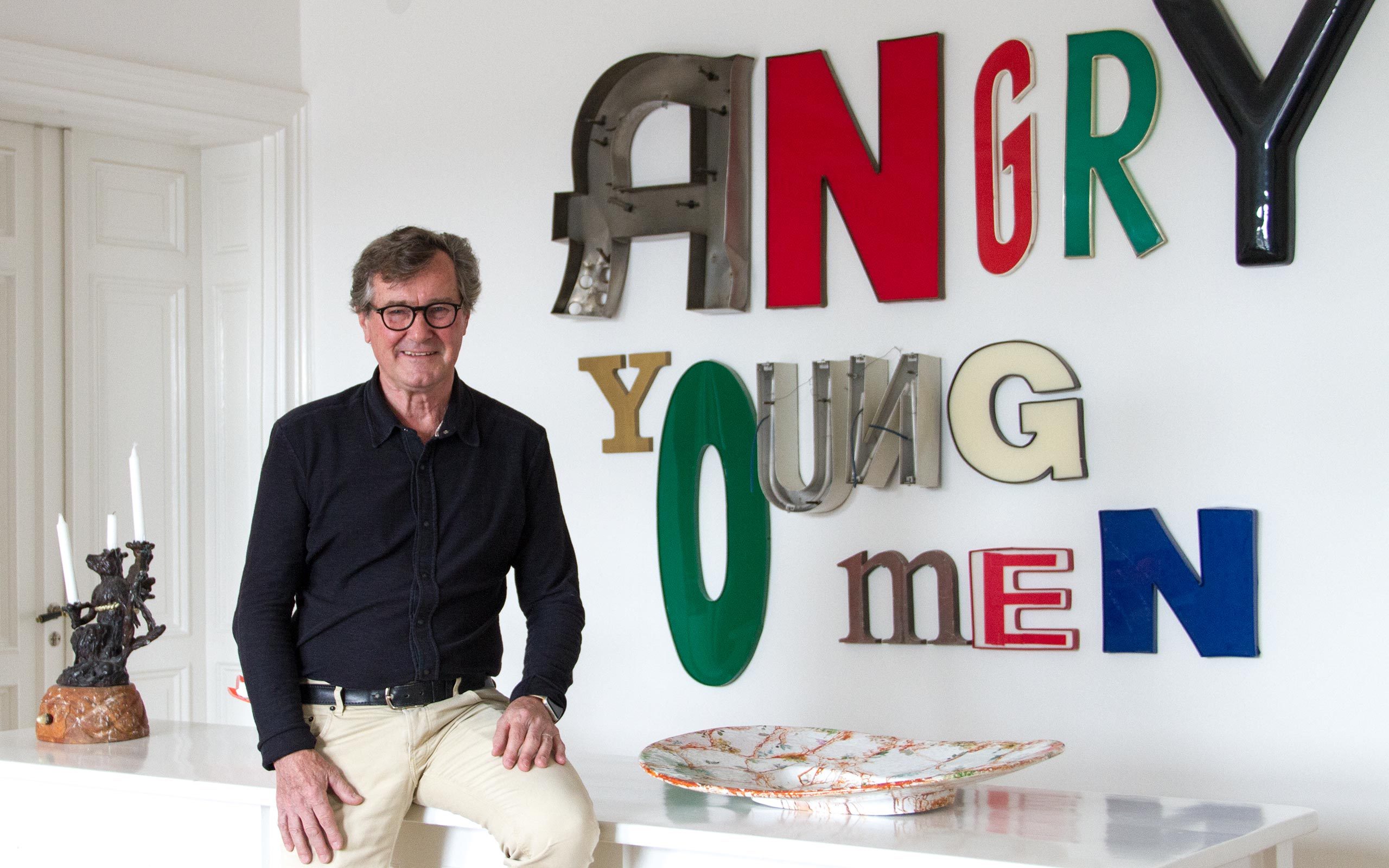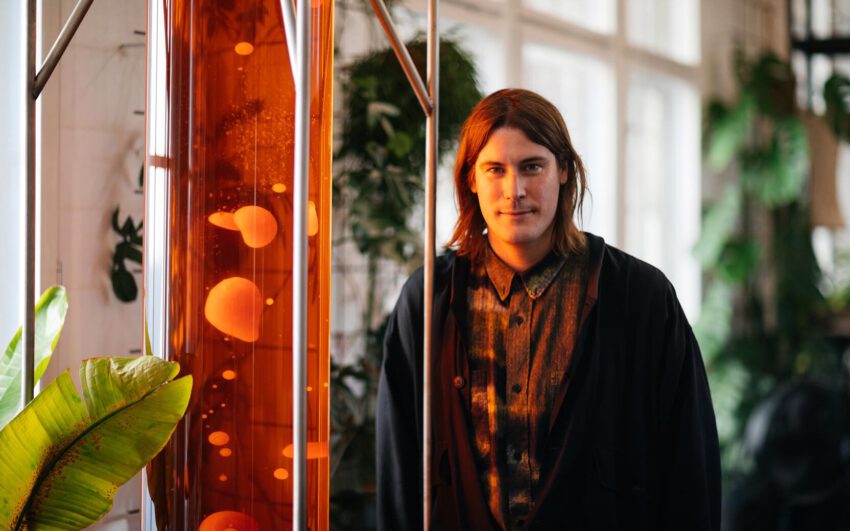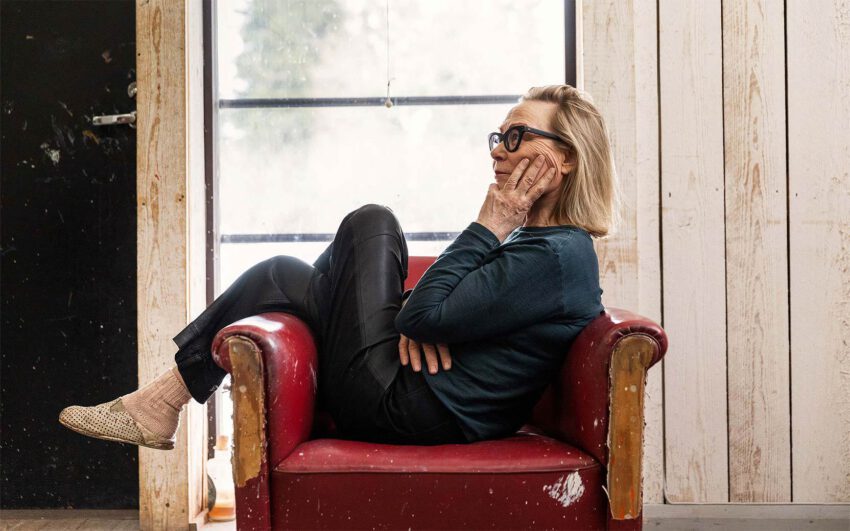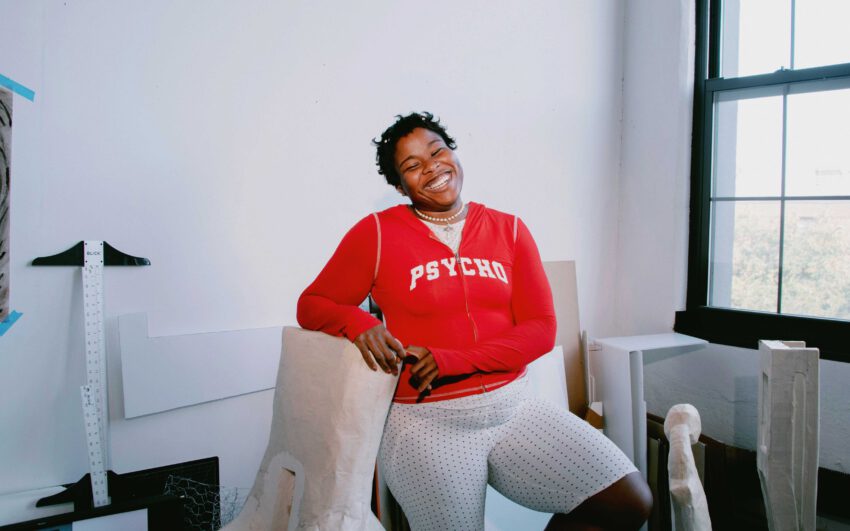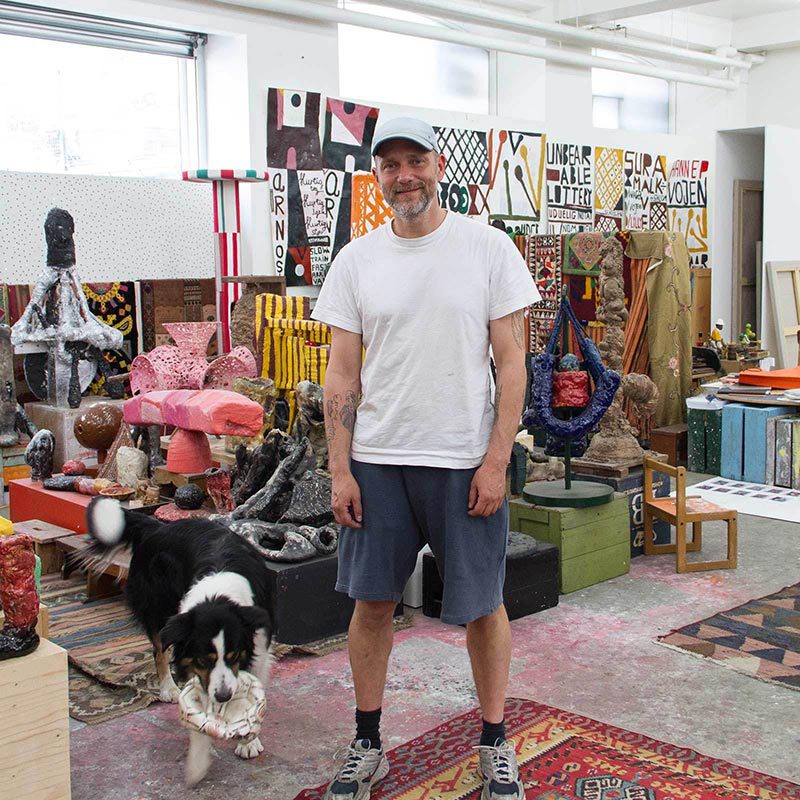The scene for contemporary art in Europe’s North is expanding and developing new dynamics as international collectors are watching the scene. With Nordic Notes we regularly cast the eye on the Nordic art and cultural scene, portraying its important actors.
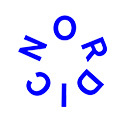
Jan Widlund, lawyer in Stockholm, has been the owner of a large art collection for more than 30 years. He is considered one of the most avid collectors in the Swedish contemporary art scene and is recognized for having discovered and paved the way for many emerging Swedish artists. His standards of collecting are uncompromising and living up to nothing less than museum quality. We met Jan Widlund in his home in Östermalm and talked to him about how he distinguishes good art from bad art, about his recent focus on younger Swedish artists, and asked for his advice to prospective collectors.
Investigating in the Swedish art scene one is quick to notice your name as one of the country’s first serious collectors of contemporary art.
It’s true that, when I started collecting thirty years ago, there weren’t many art collectors around in Sweden. There was simply no awareness for contemporary art. As a result, there were few galleries, aside of the auction houses. I was among the very few who visited galleries on a regular basis. This picture has changed completely. Today there exists a very vibrant gallery scene, especially in Stockholm, and people are browsing the art galleries on a regular basis.
Looking back what has captured your interest in art from the beginning?
I’ve always been attracted by the aesthetics of art. I am generally a very aesthetic person, not just in regard to art. But in order to become more knowledgeable about art I decided to take both a degree in art and in law from Stockholm University as well as an economics degree from the Stockholm School of Economics. And while my colleagues at the law firm bought shares in companies, I bought art. For some time, I felt quite alone in the field. Having been a legal counsel to the directors of the Moderna Museet David Elliott, Lars Nittve, and most recently Daniel Birnbaum for more than 15 years gave me insight into the innermost circles of the art scene and and enabled me to consult the museum on some really delicate questions such as the restitution to a Jewish family for a work by Emil Nolde worth several millions. I continue to keep close ties to art institutions serving as a member on different boards such as Marabouparken, and until recently as vice chairman on the board of the Friends of Moderna Museet.
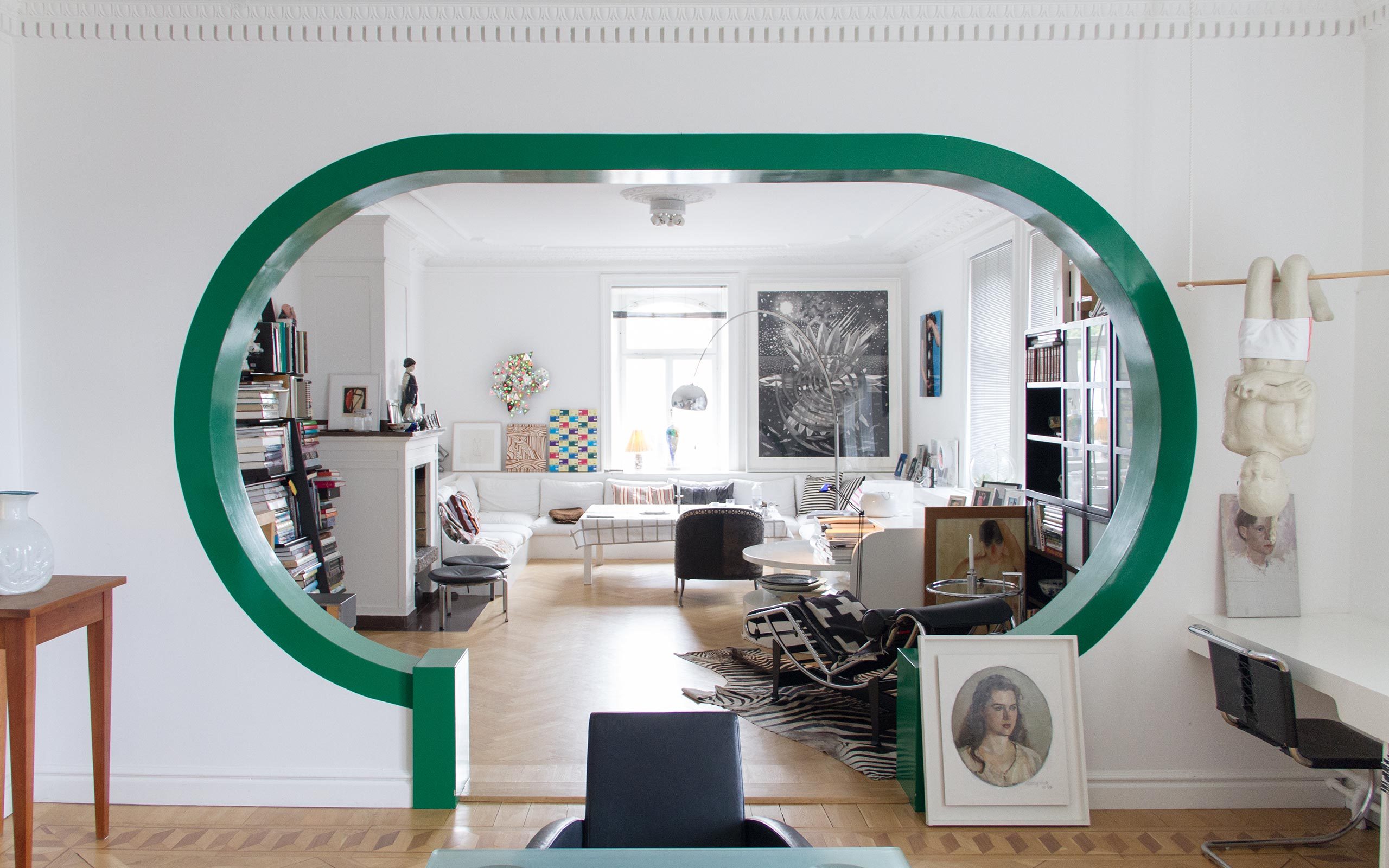
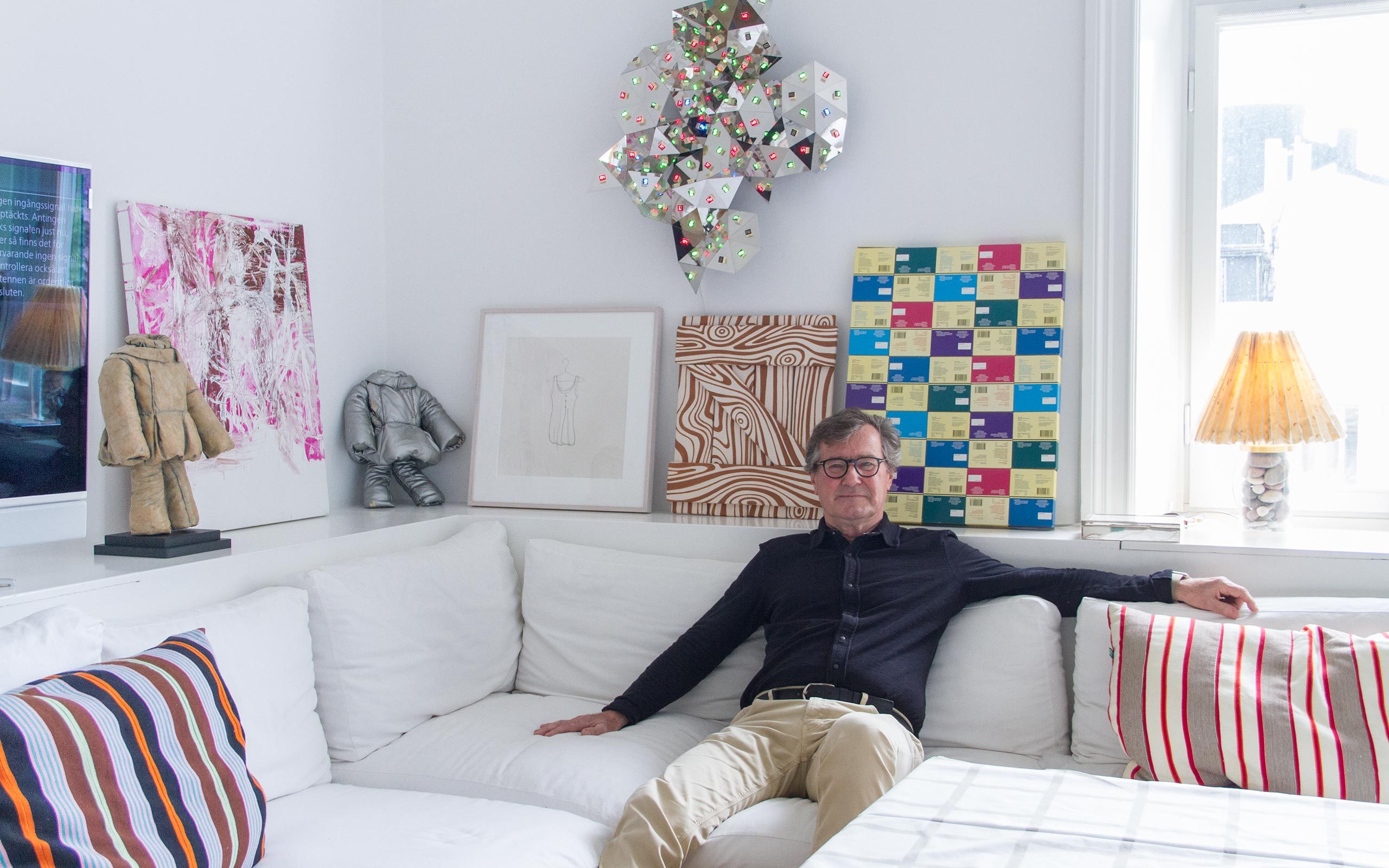
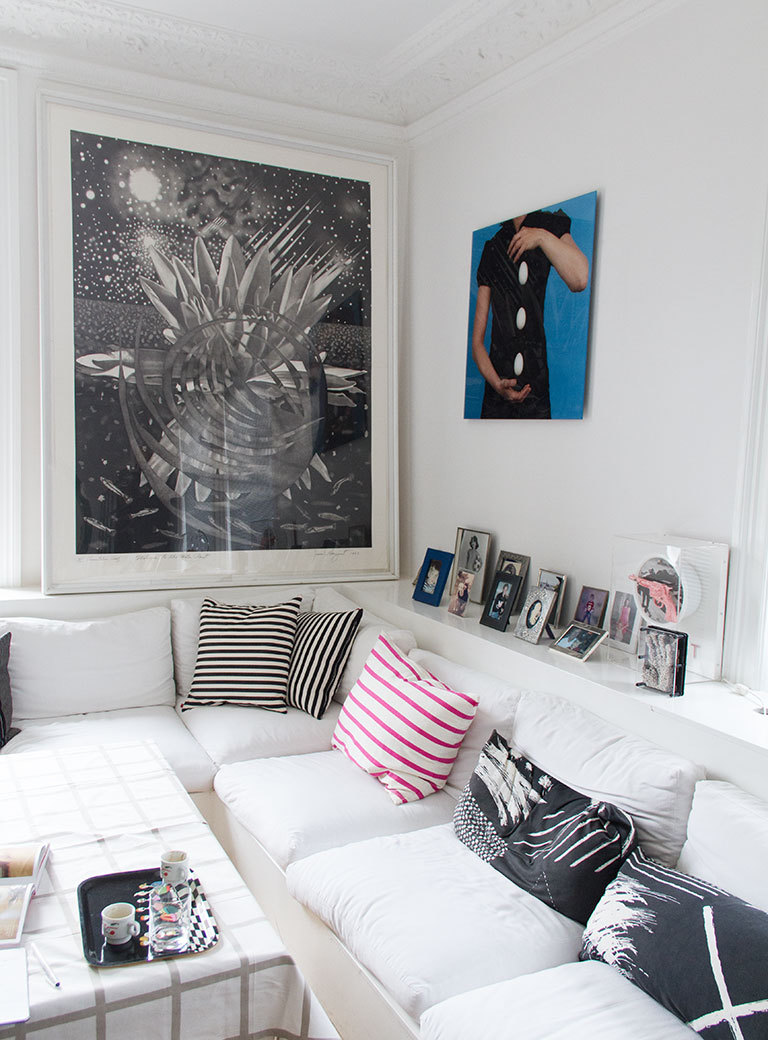
In art circles you are recognized as having a natural eye for art that is important and topical.
I don’t want to sound complacent, but over the years I’ve developed a sense for what is good and what is bad art. I see or rather feel it immediately. With very few exceptions this feeling has never disappointed me in thirty years of collecting.
A lot of people, including prominent players in the art scene, rely on your judgment. How do you judge the quality of an artwork?
One important aspect is whether I get the feeling that I haven’t seen anything like it before. This feeling can relate to both the artistic conception or the style represented in the work. It is very much a gut feeling, which I act on.
Thirty years are a long period of time. Did your collection take new turns over the years?
In the beginning, I was focused more on international art, including American artists such as Roy Lichtenstein or James Rosenquist and other international artists, for example Sigmar Polke. But over time, I have changed my priorities and during the last few years, I have restricted myself to collecting Swedish artists. I often try to support young artists and some of these artists who were still young when I discovered them are now widely known and acknowledged in Sweden and internationally. Ten years ago, I bought a video work by Natalie Djurberg from her gallery Marconi. Marconi was astonished that someone was interested in her work. Today, Natalie Djurberg is perhaps the most well-known Swedish artist.
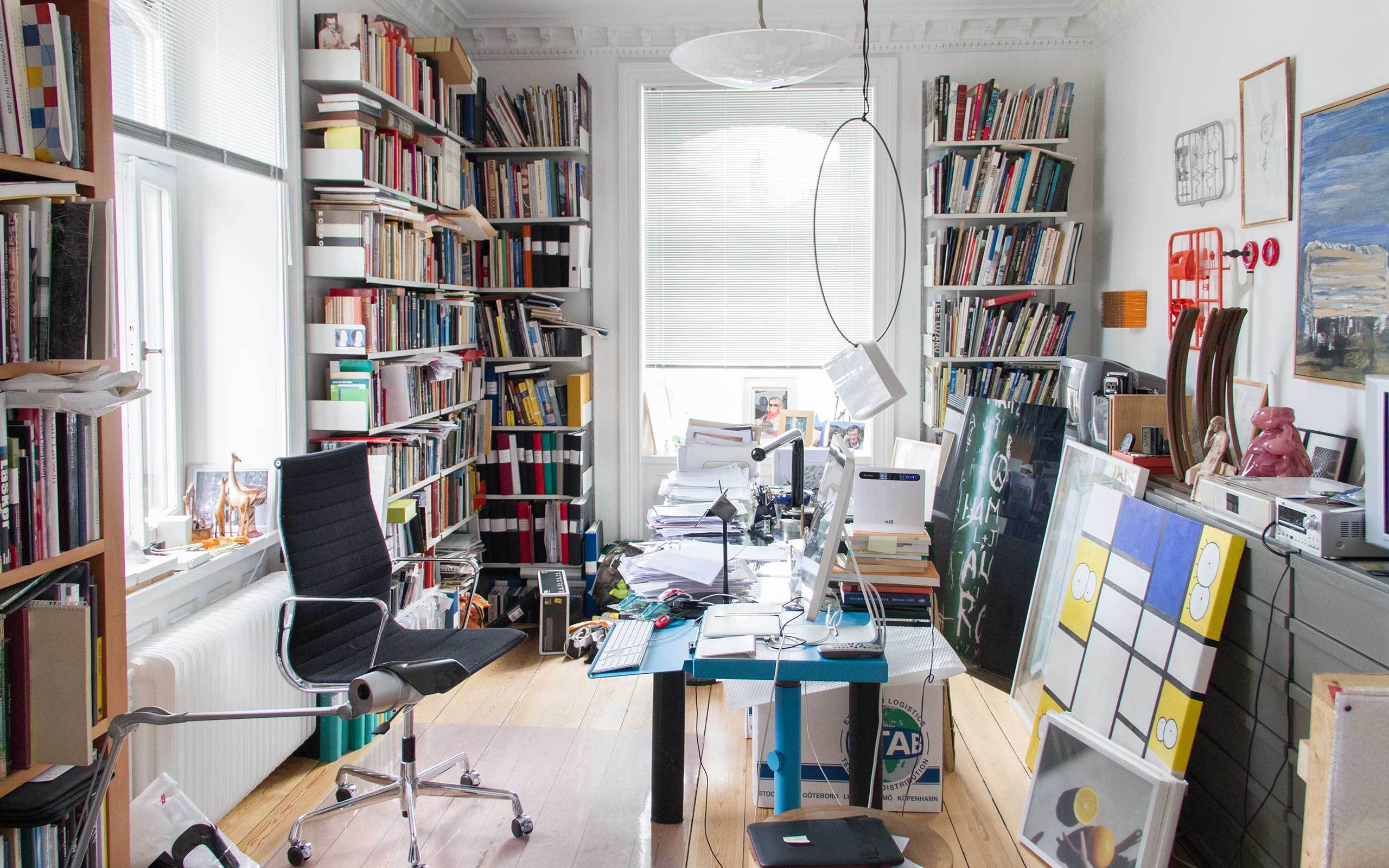
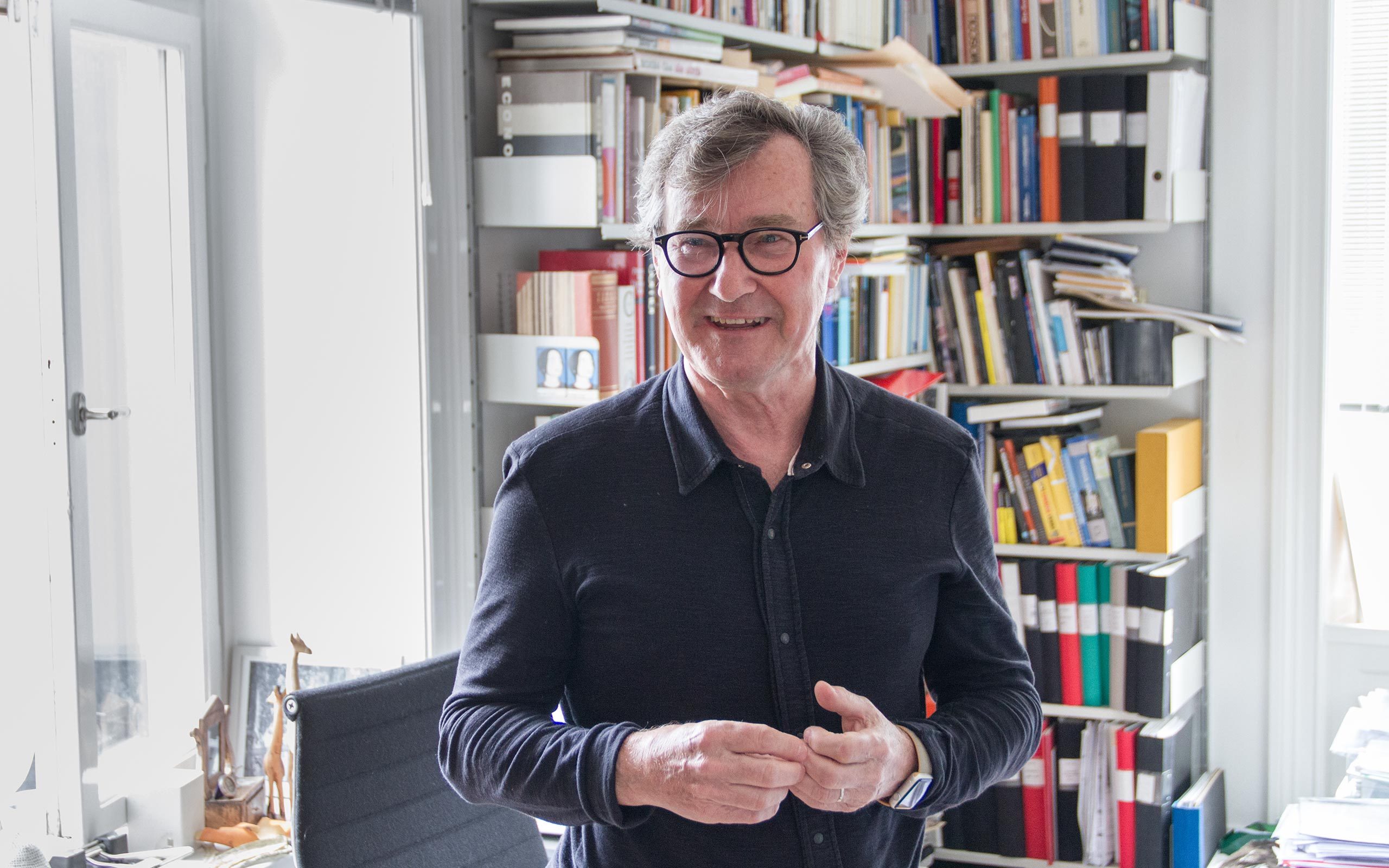
Who are the other artists you discovered for yourself early on?
There have been a number of Swedish artists like Annika von Hausswolff, Ernst Billgren, and Jacob Dahlgren, whose talent I was among the first to have supported. In general, I find it much more interesting to buy art from a young aspiring artist than from someone at the age of sixty, who has been widely recognized. For example, I wouldn't buy Andy Warhol today – even if I had the money I wouldn't. I find it more satisfying to know that I was among the first to recognize an artist’s talent and value before everyone jumps on him. It’s not exciting to buy from an established artist. It is simply not a sport.
Collecting with a ‘sporting spirit’ is an interesting concept. Every sport is based on a strategy. Have you got one?
No, I haven't really got a strategy, except that it should be good art. (laughs) I don’t collect art according to a particular theme or so. As I have already mentioned, it is important to me that the works meet a very high standard. At least I like to think so. I am collecting every genre ranging from sculptures to oil paintings and more recently also video art, I don’t collect watercolor. I’m not really interested in the entire work of an artist, I rather focus on the quality of the individual artwork.
It is obvious that you are uncompromising when it comes to art. Collecting is not a hobby but actually quite a serious business for you.
Well, art collectors are judged by the poorest not by the most exquisite work in their collection. I’m investing a considerable amount of my time to look for new art and to be knowledgeable about it. The most important thing for me is to receive the recognition of people who have insight into art and have good judgment. Rather than accumulating wealth, my personal aim of collecting is first and foremost to receive the respect of a critical and knowledgeable audience. I want these people to look at my collection and say “this is really good” instead of “this is worth a lot”.
Finding “good art” as you say is always a challenge as the art market is becoming denser and more complex. What is your hunting ground for good art?
You know, when I started visiting galleries more thirty years ago, there were maybe a hundred in Stockholm. I chose 10 or 15 of them, which I visited regularly. As there weren’t so many serious collectors at the time, I was noticed and became quite well known as a collector and loyal customer. After a while, I was invited to cast an eye on newly arrived works, before they were introduced to the public in gallery shows. Of course such previews give you an advantage over other collectors. I am spending around twenty hours per week browsing for art. Of course I am also going to art fairs these days such as the Armory and the Frieze in London and New York, and of course the Art Basel. But most of the works I buy come from my chosen galleries in Stockholm.
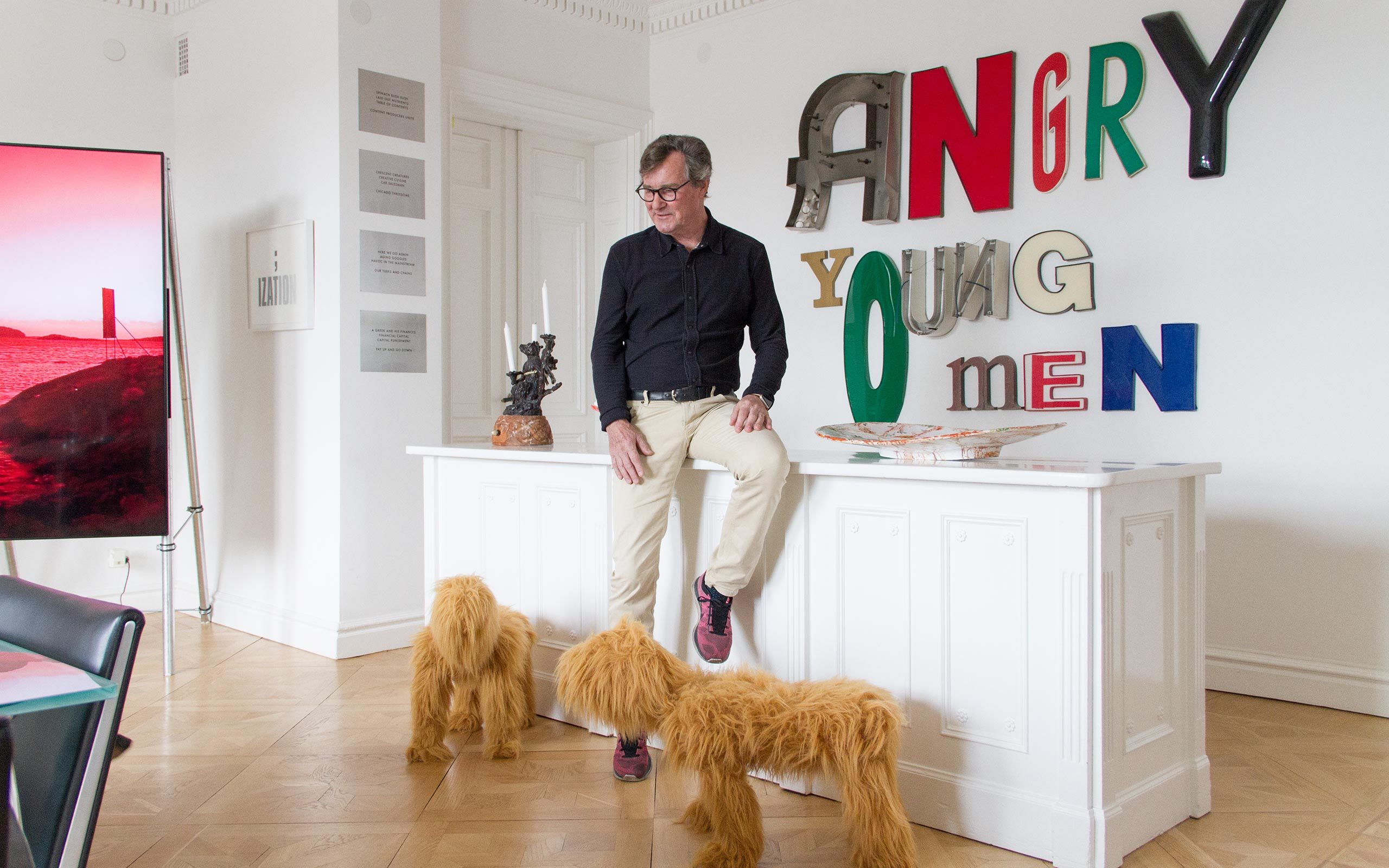
Art from Scandinavia has received more and more attention lately and is often associated with the term “Nordic Art”. Can art from the Nordic region be subsumed under a single label?
I feel that Scandinavian art, in the minds of people outside the Nordic region, refers mainly to Danish or Norwegian art. But I don’t think the term “Nordic Art” can do justice to the diversity of art produced by artists from the Nordic region. Also, in today’s art world, it matters less and less where an artist comes from. Today you find lmany Scandinavian artists working abroad. Many have their studio in Berlin bringing them together with artists from other places, by which they are then influenced and in turn influence others – a network of mutual influences.
Do you think that Swedish artists are ready for the international art market?
Yes, I think some of them are. Natalie Djurberg has been among those who paved the way for Swedish artists in the public perception. I am sure that others will follow in her footsteps on an international level.
Many collectors seek a personal relationship with the artist. Often they find it just as rewarding as the idea of owning an artwork. How do you feel about this?
To be honest, it is not that important to me. Moreover, I try to avoid building close relationships with the artists. That way I stay clear of any commitment and maintain a level of personal freedom, should I decide to sell a work in my collection for whatever reason, which otherwise I would not have.
You are said to have owned 300 pieces of art at some point. How does one keep such a great number?
We did not keep them all in our home. In the early days of collecting it was my idea to decorate our office spaces at Vinge, the law firm in which I was a partner. The art was so well received, both by the clients and our employees, that we soon started having public showings at the law firm, which became regular events. And I realized that I needed more to show. So I started moving the greater part of my collection to Vinge. I liked the fact that the artworks would come to life this way. Since I have retired and reduced my activities as a legal counselor I have sold part of the collection to Vinge and other law firms who were interested. I kept only a few selected pieces myself.
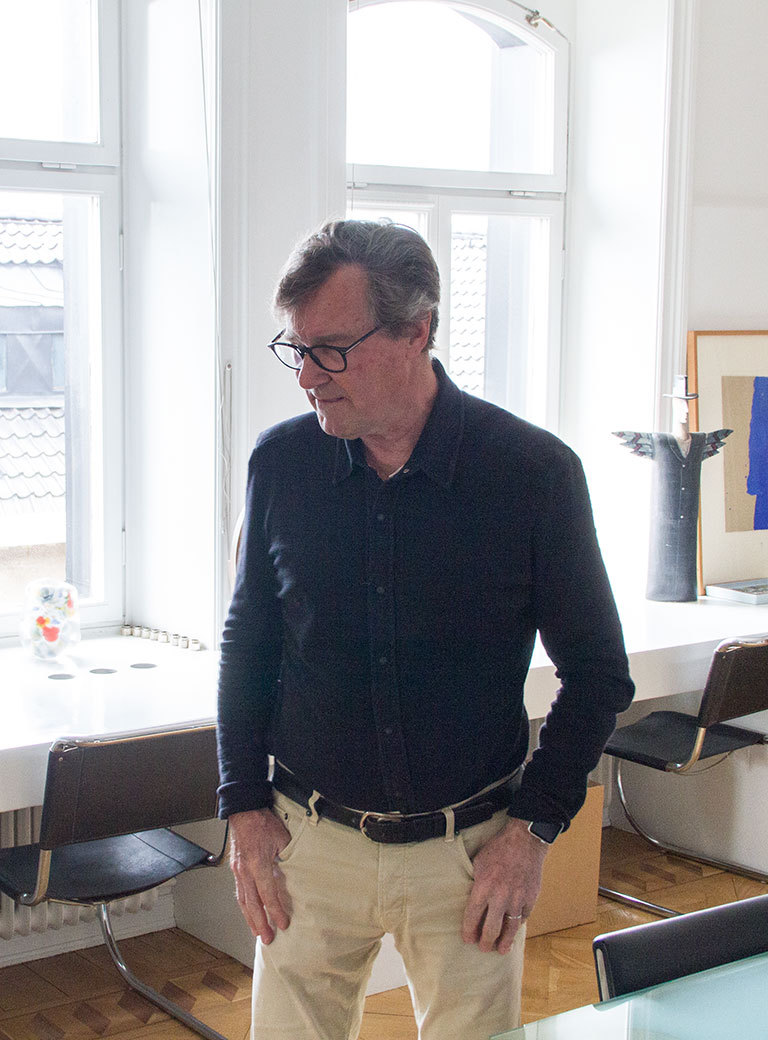
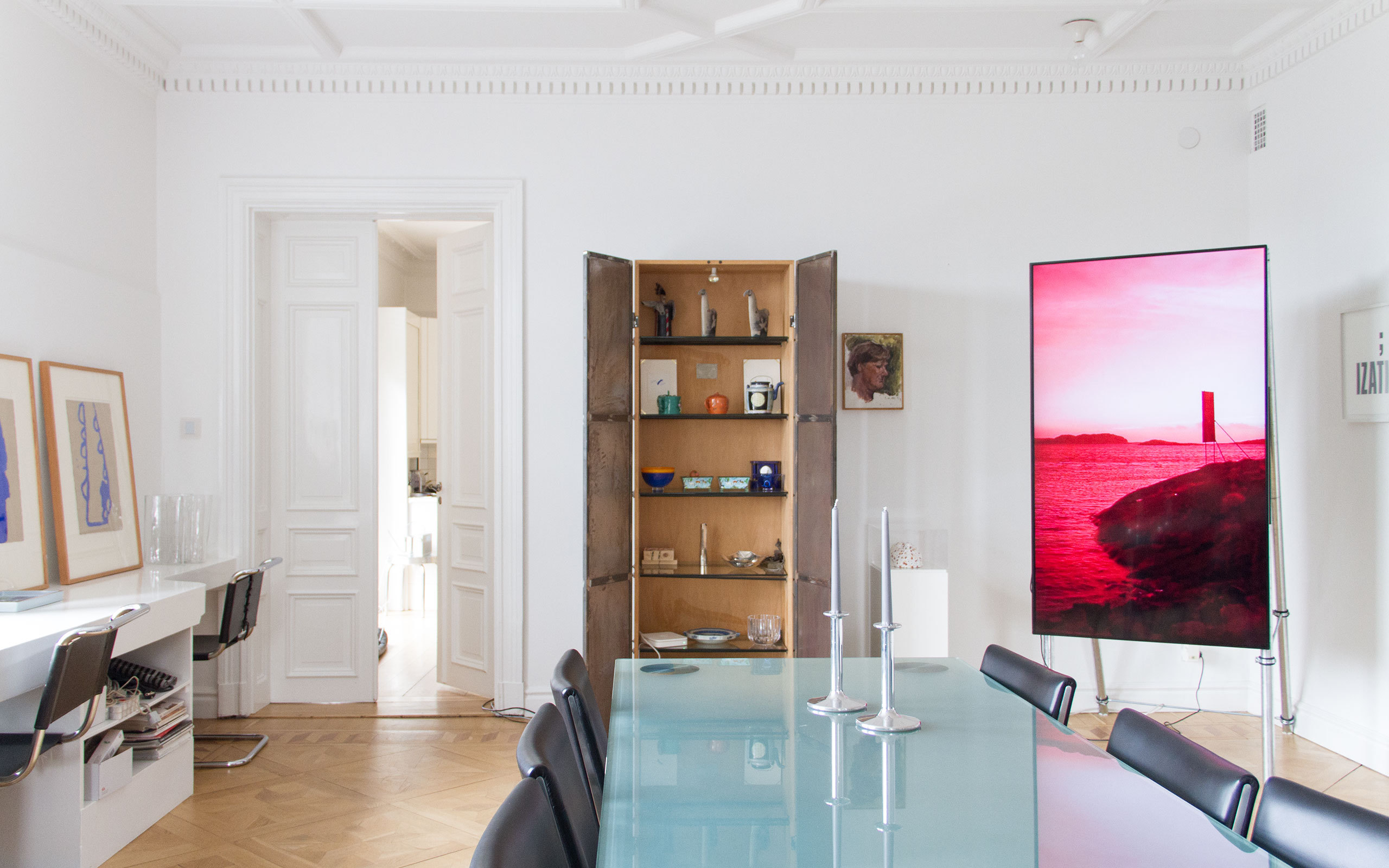
It must be hard to part from a collection one has built over a long period of time and with so much involvement.
Luckily I am not a very sentimental person. That helps. (laughs) I’ve never restricted myself in selling. Some collectors keep everything, I would sell a work, if I realize that I have made a mistake with a purchase, either because I stop liking the work after a while or because the artist has not been able to develop. I don't like being surrounded by mistakes. And, principally speaking, I don’t think it is a good idea to hold on to everything you ever bought.
Talking about mistakes. Do you want to share one moment where you made a wrong decision as a collector?
I owned a Donald Judd. He has always impressed me. It was the early days when I was focusing mainly on international art. I sold the Judd when I began refocusing my collection to Swedish art. If I had not sold it, I could be a billionaire.
Would you share with us a piece of advice for people who seek to get seriously involved in collecting contemporary art?
I think first of all you have to be knowledgeable about art. Perhaps I wasn't so knowledgeable myself, but anyhow. By reading many art books you will get a grasp of the broad spectrum of contemporary art. It’s all about looking! Looking at all sorts of art! The more art you look at the better will you be able to discern the conventional from the original, and ultimately what will make a contribution to your collection. Also, when I started, I learned a lot from speaking to gallery owners. I think that's important. Over time you will develop a sense, which galleries sell quality work, from which you can buy safely. Ultimately, it's always about quality, not quantity.
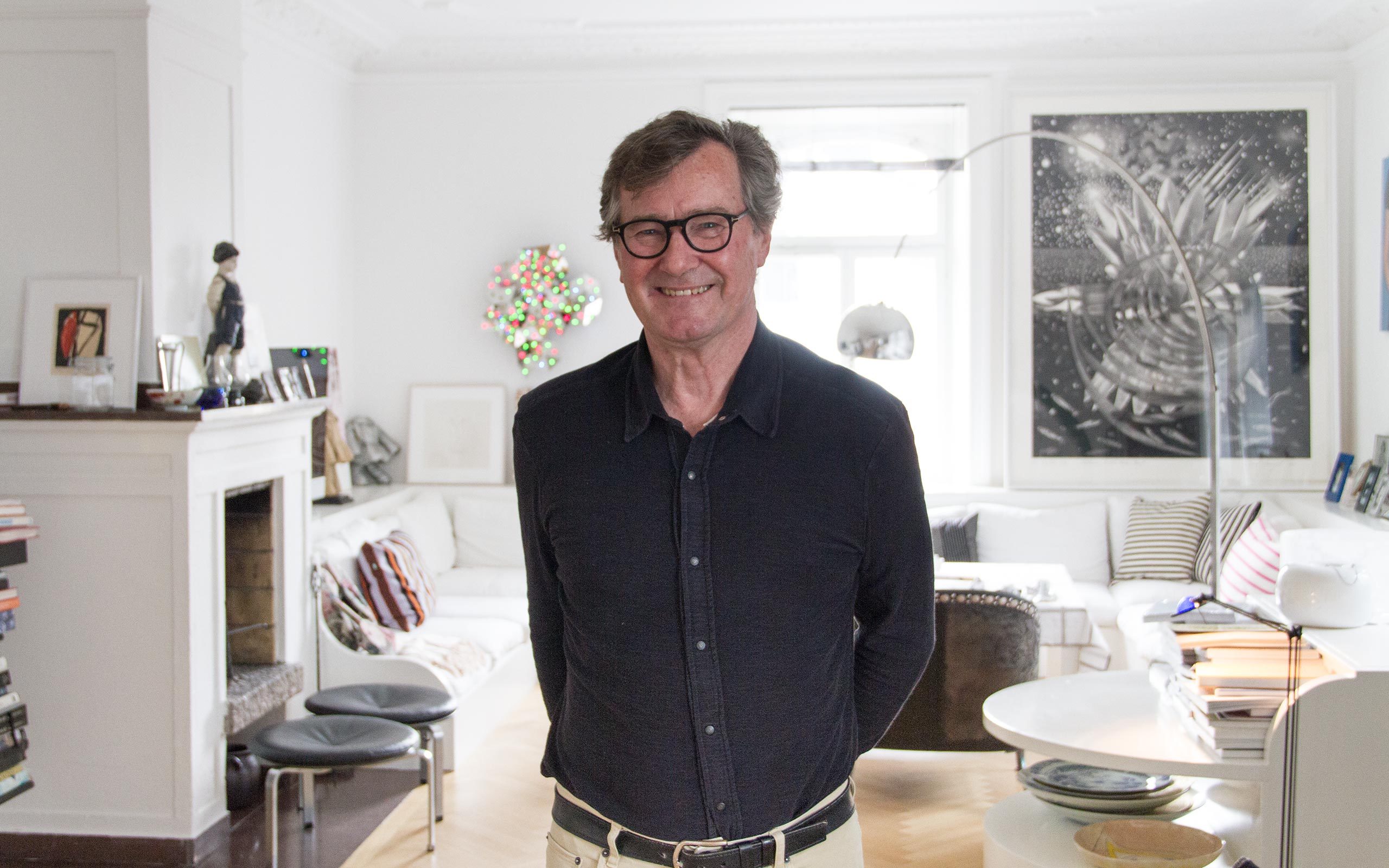

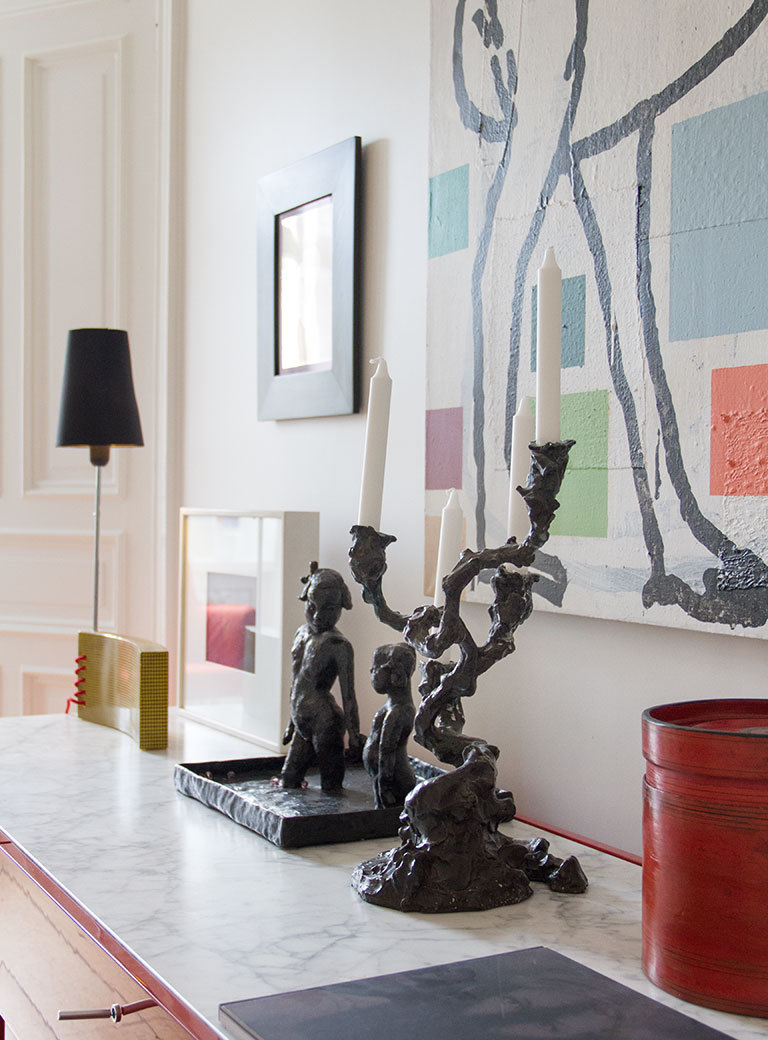
Interview: Michael Wuerges
Photos: Florian Langhammer
The scene for contemporary art in Europe’s North is expanding and developing new dynamics as international collectors are watching the scene. With Nordic Notes we regularly cast the eye on the Nordic art and cultural scene, portraying its important actors.



